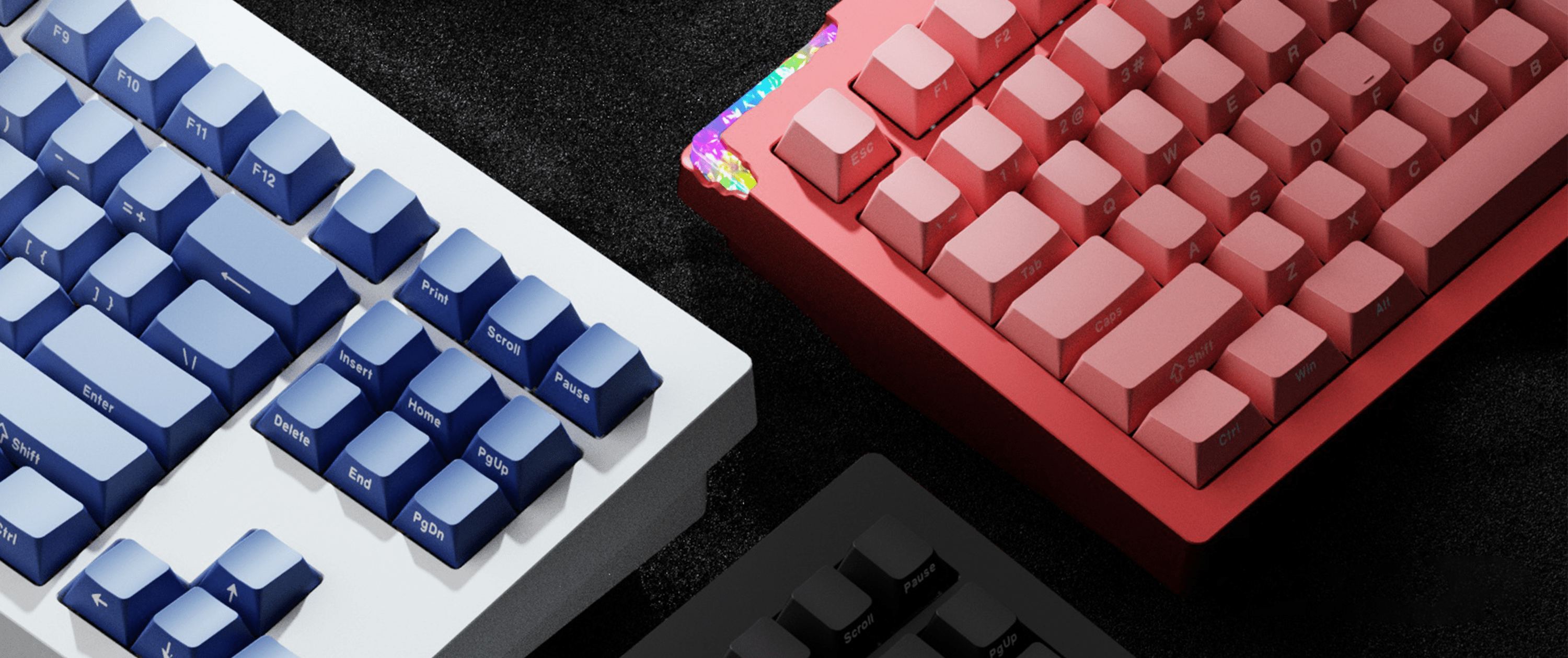In the world of custom keyboards, aesthetics play a massive role in the overall experience. While switches, keycaps, and layout are essential, the finishing on your keyboard case can also make or break the look and feel of the entire setup. Two popular techniques for achieving that smooth, durable, and professional finish are electrophoresis and anodizing. Each process brings its own set of characteristics and advantages to the table. Let’s dive into the details of each to help you decide which might be the better choice for your next keyboard project.
What is Electrophoresis?
Electrophoresis is a finishing process that uses electrical currents to evenly coat a surface, creating a smooth and often colorful finish. It’s widely used in industries like automotive, jewelry, and, more recently, in custom keyboard manufacturing. The process involves submerging the keyboard case in a liquid bath containing a charged solution of metal or polymer particles, which are attracted to the surface when an electric current passes through. This creates a fine, durable coating on the keyboard case.
Benefits of Electrophoresis on Keyboards:
-
Smooth, Consistent Finish: Electrophoresis provides a flawless, glossy finish that is extremely consistent, making the surface of the case feel smooth and luxurious.
-
Durability: The finish from electrophoresis is highly durable and resistant to scratching and fading, making it ideal for long-term use.
-
Color Variety: Electrophoresis allows for a wide range of colors, including more vivid and unique shades compared to other finishing techniques, giving keyboard enthusiasts a lot of creative freedom.
-
Environmentally Friendly: The process is often less harmful to the environment since it produces minimal waste and can use water-based coatings, which are less toxic than other chemical-based processes.
-
High Corrosion Resistance: The coating effectively protects against corrosion, a key feature for anyone looking to maintain their keyboard’s finish over time.
Downsides of Electrophoresis:
-
Glossy Finish Only: Electrophoresis typically results in a glossy or semi-glossy look, which might not be ideal for users seeking a matte or more muted finish.
-
Complex Process: Electrophoresis requires specialized equipment and facilities, so it can be a more expensive finishing option for smaller keyboard manufacturers or custom builds.
What is Anodizing?
Anodizing is another popular technique for finishing aluminum keyboard cases. This electrochemical process strengthens and enhances the natural oxide layer on the surface of the metal, resulting in a finish that can be customized with dyes for added color.
Benefits of Anodizing on Keyboards:
-
Matte, Premium Feel: Anodizing typically produces a matte or slightly satin finish that feels premium and smooth, but without the glossy appearance, making it an ideal choice for those who prefer understated aesthetics.
-
Highly Durable and Resistant to Scratches: The anodized layer integrates with the surface of the metal, making it highly resistant to scratches and wear, which is essential for keyboards that will see daily use.
-
Wide Color Range with Natural Look: Anodizing provides color options, although usually more subdued than those achievable with electrophoresis. This process often results in earthy, natural tones like blacks, grays, and metallics, which are popular in minimalistic keyboard designs.
-
Corrosion and UV Resistant: Anodizing provides significant protection against corrosion and UV damage, so the color and quality will last even with prolonged exposure to sunlight or moisture.
Downsides of Anodizing:
-
Limited Color Saturation: While anodizing can yield various colors, the tones are generally softer and less vibrant than electrophoresis. Bright colors like hot pink or deep blue are harder to achieve.
-
Surface Sensitivity: Because anodizing is an electrochemical process that directly interacts with the metal, any surface imperfections can become more noticeable after the anodizing process, so pre-treatment of the aluminum surface is essential.
| Feature | Electrophoresis | Anodizing |
|---|---|---|
| Finish | Glossy or semi-gloss | Matte or satin |
| Durability | High durability | Very high durability |
| Color Options | Wide, vibrant color selection | Limited, more muted colors |
| Corrosion Resistance | Excellent | Excellent |
| UV Resistance | Moderate | High |
| Environmental Impact | Low, if water-based | Moderate |
Which Should You Choose?
Both electrophoresis and anodizing bring different aesthetics and features to the table. If you’re looking for a glossy, vibrant, and modern look, electrophoresis might be the better option. However, if you want a classic, matte, or satin look with natural colors, anodizing will offer the durability and style you need.
In general:
-
Electrophoresis: Ideal for those who want bold, colorful, and glossy finishes. It’s a great option if you’re aiming for a striking appearance that stands out on your desk setup.
-
Anodizing: Perfect for enthusiasts who favor understated, minimalist designs with a softer, matte look. Anodizing is also the go-to choice for those who want a longer-lasting finish that ages gracefully over time.
Final Thoughts
Choosing between electrophoresis and anodizing depends largely on personal taste and the aesthetic you want for your keyboard. Both finishes provide excellent durability and protection, so your keyboard will look fantastic for years to come, regardless of which you choose. Whether you go glossy with electrophoresis or opt for a classic anodized look, you’re investing in a keyboard that’s both functional and beautiful.






